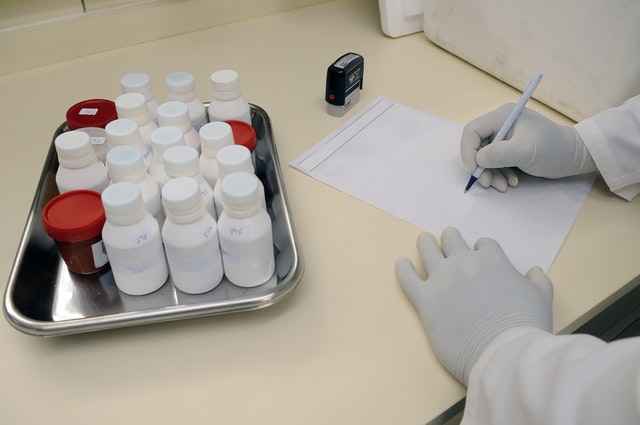General Information
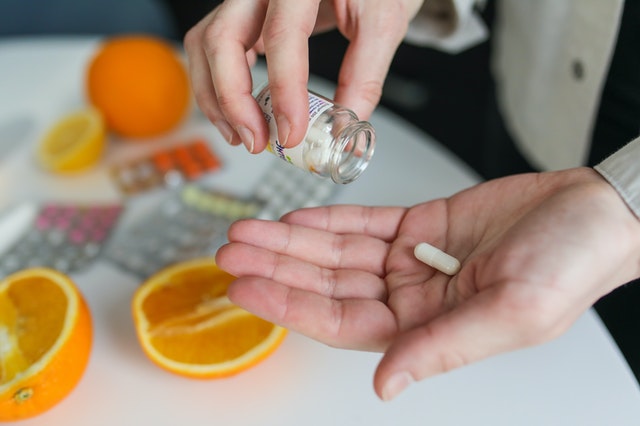
Medication order entry and fill process questions on the most up-to-date version of the PTCB® Exam (in the year 2020) account for 21.25% of the total questions appearing on the test – under one-fourth. (Get more information with our blog Comprehensive PTCB Study Guide). Ensure that you have been well-versed within the content included in this medication order entry and fill process study guide.
The substance evaluated by these questions comes from four distinct segments of the ancient test: Sterile and Non-Sterile Compounding, Information Systems, Medication order entry and fill process, and finally, Inventory Management.
Non-Sterile Compounding
Non-sterile compounding alludes to any arrangement that does not meet the measures for sterile compounding and must strictly comply with the USP 795 directions. This incorporates wearing the right PPE and guaranteeing a clean work zone before the process of starting any further preparations.
- Ointments
The ointment is a type of medication preparation that is utilized topically to treat dermatologic conditions. A few ophthalmic solutions come in a treatment arrangement as well, such as erythromycin. Ointments are oil-based medicine and are considered an effective and safe method of treatment of water in oil. In other words, treatments vary from creams since creams are water-based and considered preparations of oil in water.
The method of sporulation is utilized, which is the blending of semi-solids and powders on an oiled chunk by utilizing a spatula. The blending amid this handle must be geometric, meaning little rise to parts of each fixing are blended at a time to get a uniform blend until all fixings are coordinated into the blend. A treatment once compounded can be put away in a tube but more than likely will be put away in a jostle, as blending may be essential earlier to administration.
- Mixtures
In different types of pharmacy compounding, a blend can be categorized into numerous types of formulations. A blend can comprise various dynamic and inert fixings to define a compound. Straightforward blending can incorporate a strong and fluid, two fluids, or two solids.
As said within the treatments subsection, it is vital that the physical blending of two substances is done geometrically. In case not, irregularities may be displayed in your blend. An illustration of a liquid blend may be mouthwash utilized to treat mouth torment and mucositis. This blend often incorporates numerous distinctive details; but a basic equation incorporates a 1:1:1 proportion of lidocaine 2% viscous fluid, stomach settling agent, and diphenhydramine.
All of these are blended into a uniform arrangement blend utilized to coat the mouth and/or throat of the patient. In case 450mL of mouthwash were to be made for apportioning, each fixing would compare to 100 mL (150 mL stomach settling agent + 150 mL lidocaine + 150 mL diphenhydramine = 450mL of mouthwash).
A suspension is additionally considered a type of pharmacy mixture that’s composed of medicine in a powder frame that’s suspended in a fluid vehicle, regularly sterile water. Compatible flavoring agents can have the chance to be included in a suspension to veil any repulsive taste the medicine may have. Suspensions are moreover specified briefly beneath the following header, Liquids.
- Liquids
Numerous types of medicines are available on the pharmacy market manufactured in a liquid dosage form, whereas others must be compounded. A liquid is composed of a solute and is dissolvable. In basic terms, the solute can be the active pharmacy component that’s equally (or homogeneously) scattered through a fluid component, which is the solvent. The solvent could be a consistent substance utilized as a fluid vehicle to manage the active pharmaceutical ingredient (or medicine) to the patient’s body.
During the process of compounding, the solute must be totally broken up within the dissolvable, coming about in a homogenous item at the required concentration. A few fluid definitions, such as a suspension, must be blended completely earlier to utilize because several parts of the formulation can have the risk of settling and require resuspending to form the fluid a uniform concentration.
- Emulsions
An emulsion comprises two types of liquid substances that are immiscible, meaning they don’t blend together. In an emulsion, one fluid is scattered (spasmodic stage) all through another fluid (nonstop stage). The classic illustration of an emulsion is an oil-in-water arrangement. We all know that oil and water don’t blend. Once shaken, oil is scattered as little beads all through the water. Emulsions are regularly utilized as topical definitions as creams and as bases in treatments or lotions.
- Suppositories
Suppositories are a strong detailing that’s utilized generally rectally but a few vaginally. These are solids that comprise pharmaceuticals suspended in a base, such as cocoa butter. This sort of planning can be utilized for both nearby conditions as well as systemic. Right when embedded rectally, a suppository will liquefy at body temperature and disseminate the pharmaceutical. Suppositories are stored and put away in thick plastic or thwart wrapper to avoid softening before the process of utilization.
Suppositories can be prepared effectively by the method of hand rolling, combination molding, or compression molding. Hand rolling is the best strategy and each incorporates blending a suppository base with pharmaceuticals and shaping it into a uniform cone-shaped shape. This sort of detailing is useful to treat conditions including one’s bowels but too for those who have trouble swallowing or are incapable of requiring medicine orally.
- Enemas
Enemas are a type of solution formulation that can be utilized rectally to treat an assortment of conditions. Enemas are formulated for the purpose of treating and overseeing body conditions such as stoppage, crabby bowel disorder, ulcerative colitis, etc. Moreover, enemas can also be utilized for several purposes such as bowel prep and cleansing. They work at the location of activity of the colon lining and are not systemically ingested.
- Necessary Calculations
It is vital to keep in mind that planning non-sterile items moreover requires calculations to decide the precise sums needed for each ingredient to create the ultimate item within the rectified quality. Numerous medicines are composed in rate qualities, which can lead to confusion, depending on the sort of preparation.
- Weight/weight (w/w%)—this rate quality is used for the purpose of measuring in grams of the ingredient or even 100 grams of the total drug.
- Volume/volume (v/v%)— this rate quality is used for the purpose of measuring in mL of the ingredient or even 100 mL of the total drug.
- Weight/volume (w/v%)—this rate quality is used for the purpose of measuring in grams of the ingredient or even 100 mL of the total drug.
If you want to get more study guides and PTCE practice test, visit our website and download free for your IOS or Android devices now!
Vocabulary and Procedures
When working with the roles of a pharmacy technician, it is critical to know and get pharmacy-related verbiage, calculations, and processes. Being competent in these ranges will offer assistance with viable communication, quiet care, and eventually victory in your day-by-day errands and obligations.
- Calculations
It is necessary for a pharmacy technician to have a firm knowledge and understanding of fundamental pharmacy calculations, notwithstanding whether their particular everyday assignments include such calculations or not. In spite of the fact that the pharmacist will eventually double-check that calculations are done accurately, it makes for a more effective workflow in the event that the pharmacy technician is capable of their mathematical aptitudes.
– Formulas
A critical strategy to know and utilize when performing different pharmacy calculations is called dimensional examination. This strategy employs proportions in a sequenced equation to calculate a needed amount or reply. The common dimensional examination diagram is below:
(Given QT – conversion factor ) × (CF – quantity ) = (Wanted QT – conversion factor)
– Ratios and Proportions
A proportion can be summarized as the relative esteem between two numbers. A division of 12 can be studied as a proportion of 1:2 or one portion is into two parts. Enchantment mouthwash was said over within the Blends subsection with parts per proportion of 1:1:1. This proportion appears that each fixing of the blend has broken even with parts. A division of exactly 48 can be diminished down and broken even with the division of 24 and moreover to 12, with all three equaling the proportion of 1:2. This implies that they all are equivalent to each other.
– Alligations
Another sort of calculation commonly seen is the allegation strategy, which permits you to get a concentration of an arrangement from two other arrangements of the same fixings but with distinctive qualities. One arrangement should be the next quality and the other a lower quality than the required concentration of the ultimate item. Utilizing the contrasts in % qualities, the number of parts of each can be decided, and the volume of each portion can be calculated based on the full arrangement volume of the required product.
- Sig Codes
Sig codes are shortened forms utilized within the headings segment of medicine to communicate data from prescriber to drug store and are ordinarily inferred from Latin. In other words, sig codes are shorthand truncations utilized on medicines to ease the sum of text the prescriber has to type in. It is also important for prescribers to clearly type in these codes to decrease the risk of making mistakes, as QD (code for “once daily”) and QID (code for “four times daily”) might effortlessly be blended up with messy penmanship. As a drug store professional, it is imperative to be commonplace with the standard sig codes utilized, because it will make the information section of medicines that much simpler. Get more information about Sig Codes with our blog.
Roman numerals are now and then utilized in pharmacy, in spite of the fact that not routinely, instead of normal numbers. Here are the Roman numerals as well as the numerical values for each:
- SS – Abbreviation of 12
- I (i) – Abbreviation of one
- V (v) – Abbreviation of five
- X (x) – Abbreviation of ten
- L – Abbreviation of fifty
- C – Abbreviation of one hundred
- D – Abbreviation of five hundred
- M – Abbreviation of one thousand
These above Roman numerals can be put together for the purpose of forming extra numbers, such as II or ii for 2 and LV for the number 55. It is imperative to note that a lesser Roman numeral put some time recently another implies subtraction, whereas a lesser numeral set after another implies addition. To be more specific: IV equals 4, while VI equals 6. Another instance of this can be: XLI equals 41, while LXI equals 61.
- Medical terminology
Medical terminology is often utilized very habitually within the healthcare industry, which incorporates pharmacy. It is utilized in all forms of communication, like a phone call from a doctor’s office or verbiage on a medicine. It is vital for a drug store professional to get to be commonplace with and understand basic medical terminology because it is considered the basic one for appropriate communication.
Knowing the main distinction between hypertension (high blood weight) and hyperlipidemia (high-rated cholesterol) will assist you to identify the related medication within the patient’s profile and conjointly permit you to communicate viably with both patients and other healthcare experts. Ensure that you have completed your homework and compose a list of essential restorative terms of pharmacy, which can be done with a straightforward look engine search.
- Other symbols
There are several other symbols that are also often utilized within the pharmacy to communicate related information such as a medication’s concentration or the amount of the medicine required to apportion to fulfill a proper medical prescription.
– Days of Supply
As specified in other modules, days supply (which is also called DS for short) in some cases must be calculated by the pharmacist or the pharmacy technician based on the endorsed amount and particular bearings recorded on a medicine. In other occurrences, days supply may be composed as “x7D”, which implies for 1 week – 7 days, “x3Mon”, which implies for 3 months, or “until gone”, which implies until the whole quantity is finished. In numerous cases, the prescriber will not list a day’s supply of medicine in the event that the medicine could be an upkeep pharmaceutical. This implies the understanding will be on the pharmaceutical long-term, with no predictable halt date.
– Quantity
The amount of medicine can be communicated in various ways. A prescriber can essentially compose the number of units (e.g., #30 tablets or #5 patches), which is the foremost fundamental and visited way amounts are seen. Be that as it may, a suspension or fluid amount is regularly composed in milliliters( or mLs for short) whereas most pharmacy creams and treatments are composed in grams (or gms for short). With respect to pharmacy solutions, the amount will be composed in mLs as well, despite the fact that a few prescribers may compose QS (amount adequate) which is then based on the desired days’ supply composed of the medicine.
– Dose
The drug dose is the sum of pharmaceuticals the persistent is assumed to require or utilize at a certain recurrence. It can be composed as essentially the number of units (1 tablet or 2 patches) or be communicated as weight or volume. Diclofenac 1% gel may be a topical torment medicine whose dosage is composed of grams. A popular sig seen for Diclofenac 1% gel is as follows: Apply 1 to 2 gms topically to the influenced joint on a basis of each 3 to 6 hours as required.
The solutions for eyes and ears are dosed by the number of drops (gtts). The solutions of oral are regularly dosed in mLs; in any case, now and then they will be dosed utilizing other standardized units like teaspoons or tablespoons. It is imperative to note how numerous mLs are in a teaspoon (c 5 mL) and a tablespoon (maximum by 15 mL) as verbal syringes are calibrated with estimation marks recorded in mLs.
– Concentration
Concentrations can be communicated in various ways, depending on the medicine. But only certain concentrations of such solutions are commercially accessible.
To be more specific, morphine solution which is now available on the pharmacy market is in a concentration of 10mg/5 mL in expansion to a concentrated definition of 100mg/5 mL. Most creams and treatments come provided at a rate of concentration. Erythromycin comes in a 0.5% eye treatment, which can too be communicated as a concentration of 5 mg/gm. Amoxicillin comes in a 400 mg or 5 mL verbal suspension, whereas azithromycin comes in a 200 mg or 5 mL verbal suspension.
It is vital for the pharmacy technician to know the units of degree and the method of changing over from one to another. Within the occasion a prescriber composes a medicine for levothyroxine 0.075 mg, you’ll know to utilize levothyroxine 75 mcg for the medicine information section and preparing. Another case: in the event that a prescriber composes for morphine concentrate verbal arrangement 20 mg or mL, you know to choose the morphine concentrate verbal arrangement 100 mg/5 mL commercial item as the concentration is the same.
Equipment and Supplies
There are sorts of equipment and supplies that are utilized to assist encourage satisfactory sedate conveyance and organization. These supplies offer assistance to patients getting the pharmaceutical they require precisely and successfully.
- Package size
A few types of medications are provided by the pharmacy producer in a particular unit-of-use bottle. This may be done for an assortment of reasons, counting steadiness, photosensitivity, dampness limitations, etc. For illustration, Aggrenox is apportioned in a 50 number unit-of-use bottle and ought to not be repackaged. Moreover, nitroglycerin sublingual tablets come in a little golden vial. These tablets must stay in their holder until required by the persistent for photosensitivity and solidness purposes.
- Unit dose
Medicine in a clinic or inside the inpatient setting is unit dosed into single little bundles. This makes a difference with ease of organization in expansion to the truth that a patient’s remain inside the inpatient setting is ordinarily generally brief. This implies just a number of days of medication will be used, as contradicted to a whole bottle. Within the retail setting, a few pharmacies can offer their clients the capacity to induce their drugs to rankle bundled or pouched, which makes a difference in medication administration and compliance. These administrations are particularly useful for caregivers or those with memory disabilities who have a difficult time when dealing with as well as setting up their pharmacy pillboxes.
- Diabetic supplies
Diabetic supplies incorporate prefilled affront pens and calibrated affront syringes utilized to manage a patient’s affront. Prefilled affront pens have the capacity to be dialed up to the fundamental units of affront required for subcutaneous infusion. A write needle is screwed onto the tip of the prefilled syringe. Write needles are for single utilization and ought to be disposed of from there on in a sharps holder.
- Spacers
Spacers are often utilized on the conclusion of an inhaler to form a chamber between the inhaler and a patient’s mouth. This facilitates an improved inward breath method because it holds the pharmaceutical until the quiet breaths in. Spacers moreover increment the sum of pharmaceuticals that reaches the lungs. When a spacer isn’t utilized, there’s a more noteworthy chance of an inappropriate method, which comes about within the larger part of pharmaceuticals coming to the back of the throat just with constrained sums coming to the lungs.
- Oral and injectable syringes
There are 3 particular parts of an injectable syringe: the plunger, barrel, and needle. The plunger is utilized to move pharmaceuticals through the barrel and out the tip through the needle. The inside viewpoint of the plunger is sterile and ought to not be touched amid item control. All needles ought to be disposed of within the sharps holder.
Important numbers
The numerical data of a medicate gives vital data, such as where and when the medicate was fabricated and the termination date of the medicate. This data can be found within the National Medicate Code (which is often called NDC for short) numbers, parcel numbers, and termination dates.
- Lot numbers
A medicate will contain a part number on its bundling that’s an interesting number given to each group of drugs amid the fabricating preparation. Ought for a drug producer to review medication, it’ll more often than not be done by part number. This way, a drug store can drag the influenced parcel numbers, but keep the medicated stock that’s not influenced by a recall.
- Expiration dates
A drug producer will too put a close date on each medicare bundling. This incorporates both medicine and over-the-counter drugs. Now and then, drug stores may repackage the drugs. In this case, the termination date will be set as one year from the date of repackaging or the manufacturer’s termination date.
- NDC (National Drug Code ) numbers
The National Medicate Code (which is often called NDC for short) may be a three-segment, 10-digit number that recognizes the label or producer, product, and bundle measure of the medicate. The primary segment distinguishes the producer or label of the sedate. The second segment recognizes the drug quality, dose shape, and formulation of the drug. The third section has the responsibility of distinguishing the medicate frame and estimate.
Besides, you can get more about Study Guide Of Medication Safety For PTCB Exam
Above is our Study Guide of Medication Order Entry And Fill Process. We hope that all the information and knowledge provided in this article can help you when working in the pharmacy or taking the PTCB® exam.
[Sassy_Social_Share]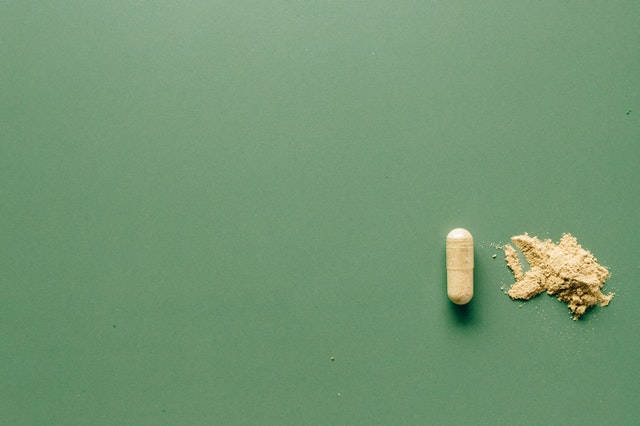
Pharmacy Sig Codes: All Medical and pharmacy abbreviations You Should Know
It is critical to understand and retain pharmacy sig codes. We've included a master list of these abbreviations in this blog.
January 1, 2022
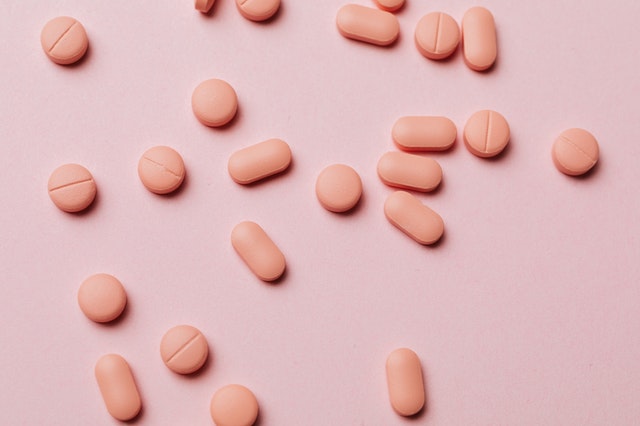
List Of Drug Suffixes And Meaning
In this article, we give you the way to remember the top 200 drugs easier with drug suffixes and meaning. Let’s get started!
January 1, 2022
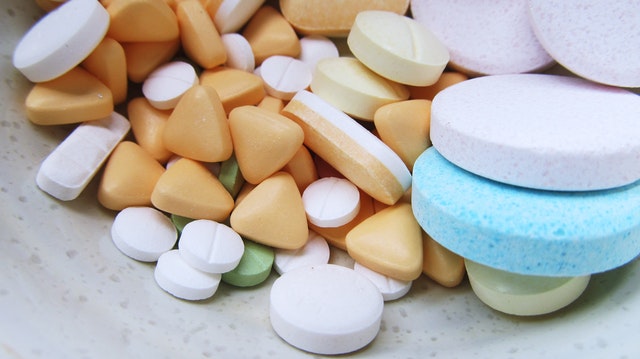
Top 200 Drugs Every Pharmacist Should Remember [2025 Updated]
Let's look at the top 200 drugs list, each of which includes a list of all active chemicals as well as the drug class to which each ingredient belongs.
January 1, 2022

